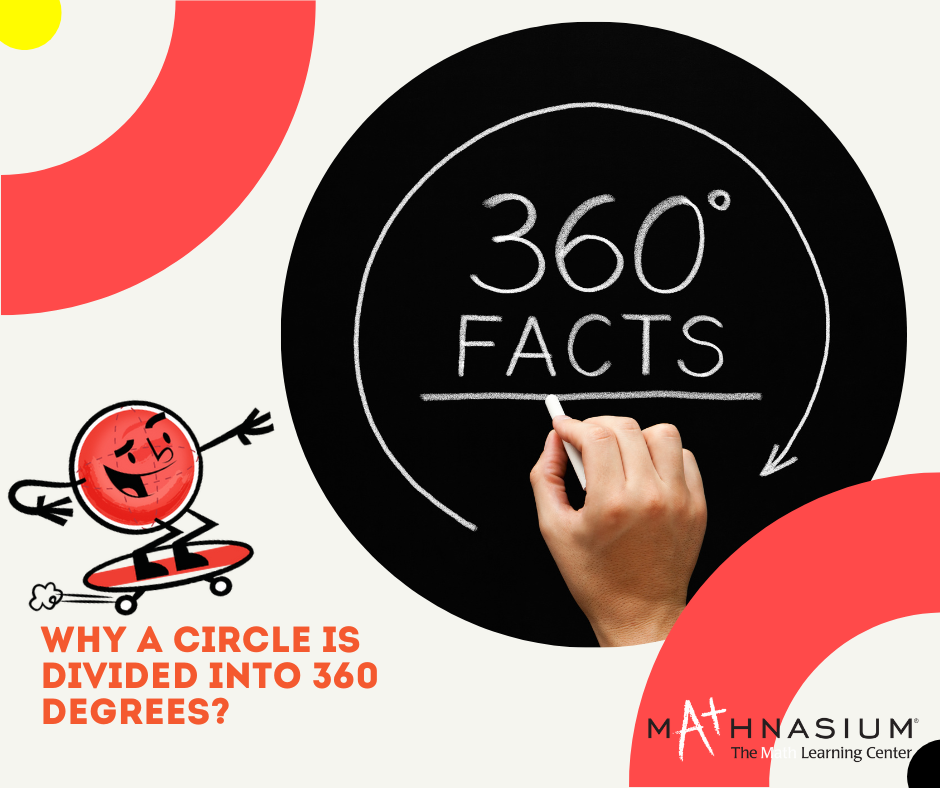Have you ever thought about where the 360 degrees of a complete circle come from? Why not something simpler like 10 degrees or 100 degrees? Who made this choice? And why?
In everyday life, we tend to use 360 degrees, but there are other systems such as radians (splitting a circle into two parts) and gradians (splitting a circle into 400 pieces). While nobody is sure of the exact origin of the use of 360, there are several hypotheses that we will have a look at here.
Reason 1 - Ancient Civilizations
One potential reason for the use of 360° is in the sexagesimal system used by the ancient Sumerians and Babylonians. We currently use the decimal system, which has a base value of 10, while the sexagesimal system has a base value of 60. So, once we reach the 10th number, we start repeating the symbols of earlier numbers from 0 to 9 to form new numbers.
The Babylonians had 60 different symbols to make numbers with. Why should they use 60 again?
Because 60, like 360, is a highly composite number with up to 12 factors. Just as we can count to 10 on our fingers for the decimal system, we can also count up to 60.
Start by counting the knuckles of the 4 fingers (not the thumb) on your right hand. 12, right?
Now, on the other hand, raise any of those fingers to remember that you finished one iteration and got the number 12. Now, repeat the same procedure as many times as the number of fingers remaining on the left hand.
The number you will end up with is 12 knuckles x 5 fingers = 60.
The Indian Context
There is even evidence that a circle, mention in the Rigveda, an ancient collection of Indian hymns) was divided into 360 parts.
Twelve spokes, one wheel, navels three.
Who can comprehend this?
On it are placed together
three hundred and sixty like pegs.
They shake not in the least.
— Dirghatamas, Rigveda 1.164.48
Reason 2 - The Calendar
Calendars from the ancient world may also be a source of our use of 360°. The Earth travels around the Sun in approximately 360 days, as has been known for thousands of years. The ancient Persians, for example, had a 360-day calendar with an extra intercalation month added in to keep the calendar in line with the seasons (essentially matching our current 365-day calendar). If you have a 360-day calendar, then it is a logical step to assume that the Earth travels 1/360 of its orbit per day, hence splitting the circular orbit into 360 equal pieces.
Reason 3 - The Mathematics
In addition to its large number of factors, 360 is also beneficial because it may look like a random number at first, but its large number of factors makes it particularly useful. Having many factors means that 360 can be divided up extremely easily. If we want to split the circle into two, we can do 360º ÷ 2 = 180º, a whole number. If we wanted to split the circle into twelve parts we can do 360º ÷ 12 = 30º, another whole number.
In fact, 360 has 24 factors; 1, 2, 3, 4, 5, 6, 8, 9, 10, 12, 15, 18, 20, 24, 30, 36, 40, 45, 60, 72, 90, 120, 180 and 360 itself. We could split a circle equally into any of these numbers without having to use decimals, fractions, or remaining bits. If we compare this to other numbers such as 10 with its four factors and 100 with nine factors, we can see just how easy it is to divide 360º into equal slices in different ways.



 (516) 484-6284
(516) 484-6284







